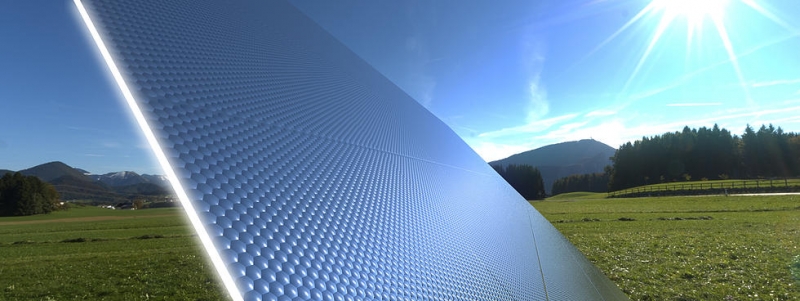Justin Kahn
Posts: 752 +6

While very effective, solar power is still quite an expensive proposition and now a start-up engineering team is developing new materials that could cut the costs dramatically.
Glint Photonics has developed a new technology that maximizes a solar panel's potential to capture as much light as possible. Current commercial solar panel installments use tracking technology to ensure the panels are taking in the most amount of light possible, but this material combination instead enhances the reflective properties of solar panels in order to capture light across a large span of different angles.
The new material is essentially made up of a number of lenses that can reflect light and capture it in high concentrations within a glass sheet where it is then trapped and transferred to a small solar cell to generate power. The glass sheet, which is coated with the new material on the top side, is fed beams of light directed via the lenses allowing the solar panel to increase its effectiveness via capturing and concentrating light from a multitude of angles without the need to keep repositioning it toward the sun.
The technology is still in the development phases and has yet to be expanded onto a commercial scale, but the team claims that it can produce energy at $0.04 per kilowatt-hour which is half the $0.08 per kilowatt-hour we see from current generation commercial solar panel installations.